Data Brief 2020-021 | September 30, 2020 | Written and compiled by Leila Gonzales and Christopher Keane, AGI, September 2020
Download Data Brief
COVID-19 Impacts to Academic Research, February - August 2020
During Spring 2020, over 80% of geoscience academic departments deferred
faculty and student research, while approximately 40% cancelled planned
research activities. Active research was more frequently cancelled for
undergraduate students (46% of departments) than for graduate students
or faculty members. In addition, the mode of research for students was
changed to virtual or computational for over 60% of departments.

DB2020-021: chart 01: Impacts on research with the onset of the COVID-19 pandemic (Credit: AGI; data from AGI’s Geoscience COVID-19 Survey)
AGI
Over the summer, research modes included more lab-based activities and
fieldwork as access to facilities and sites became more available, while
at the same time there was a decline in computational-based research. By
August, 80% of departments reported lab-based activities being used for
undergraduate research and 96% of departments reported the same for
graduate research. In addition, by August 2020, over two-thirds of
departments reported students including fieldwork activities in their
research.
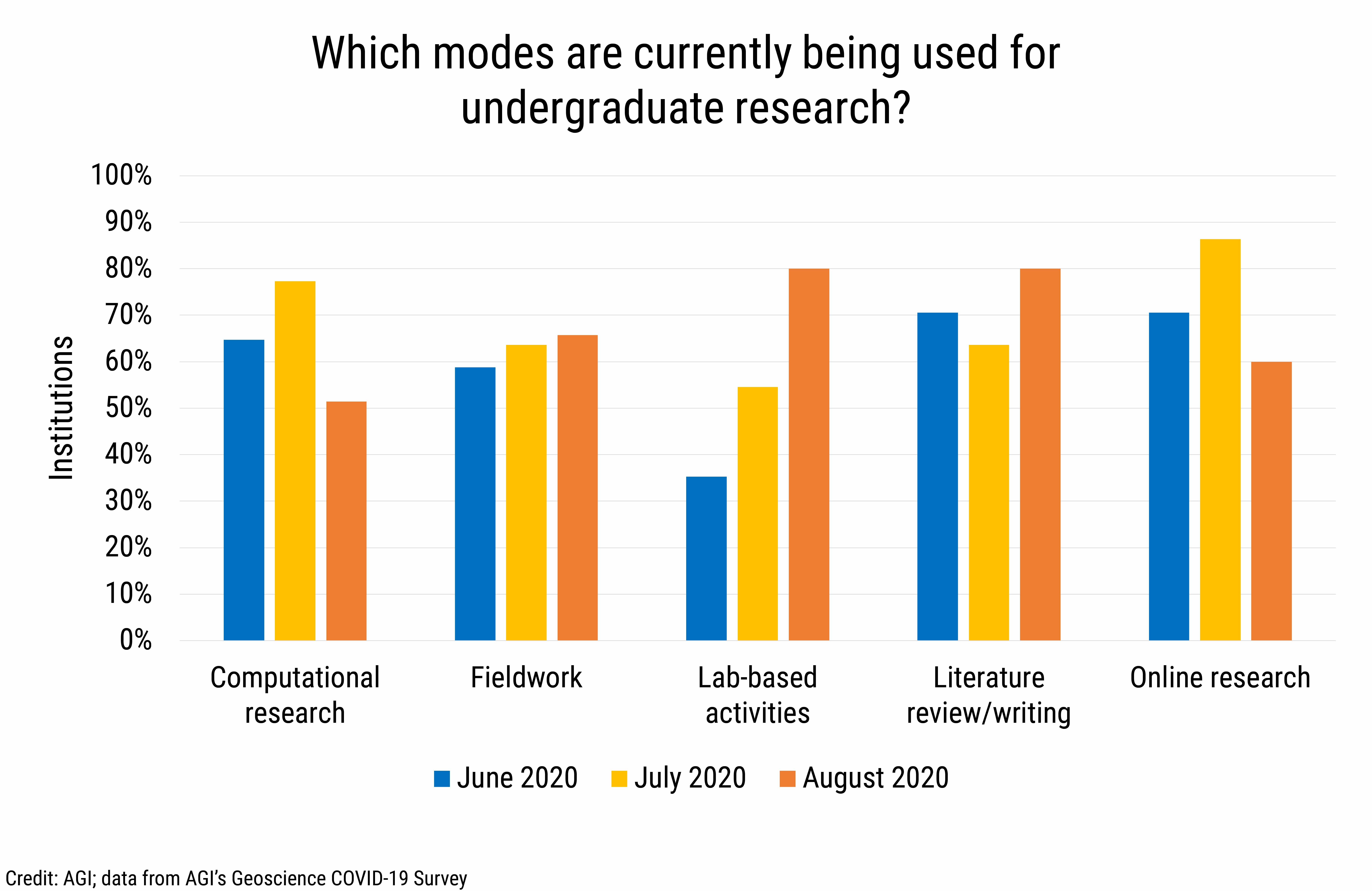
DB2020-021: chart 02: Undergraduate Research Modes (Credit: AGI; data from AGI’s Geoscience COVID-19 Survey)
AGI
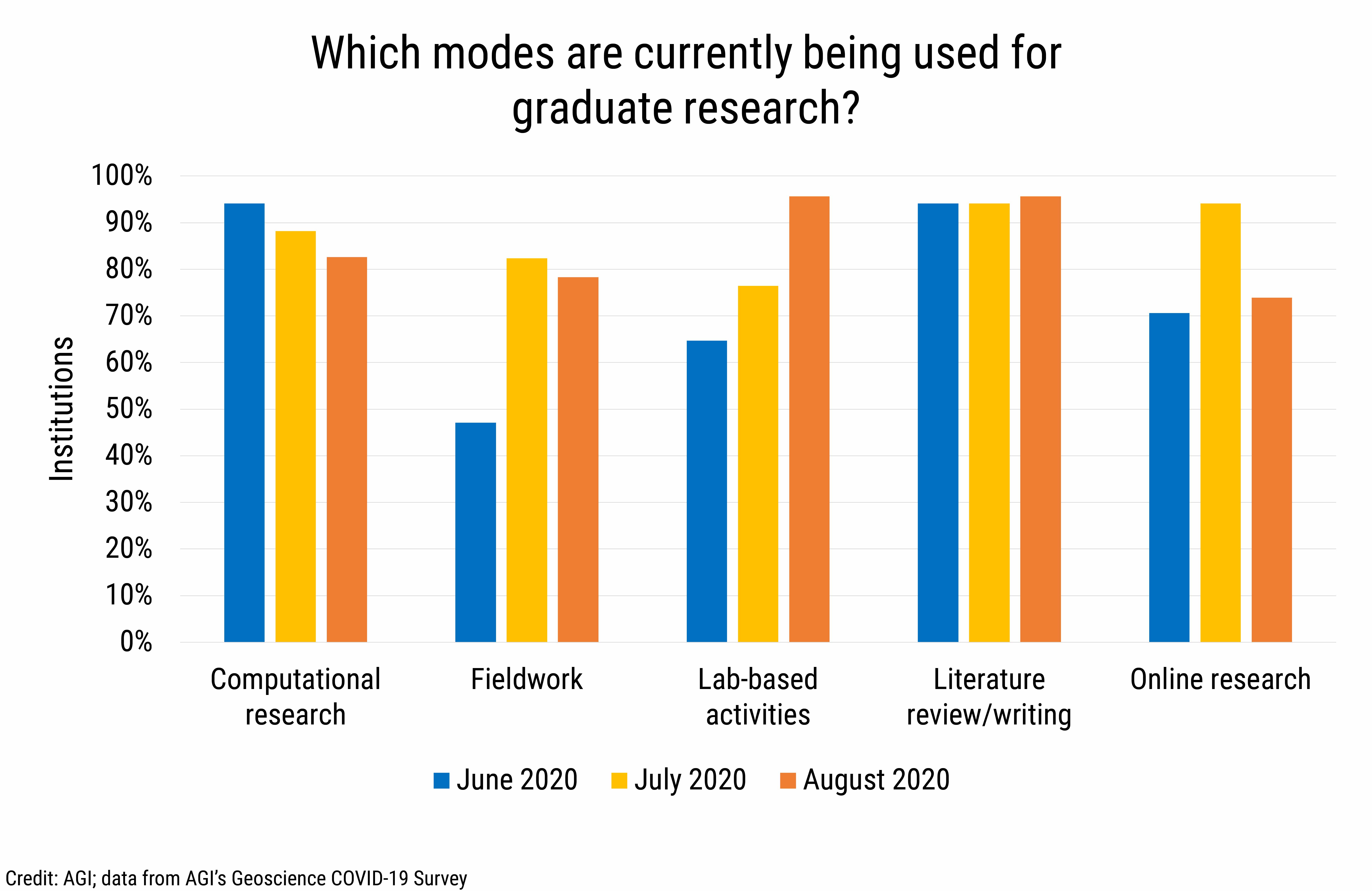
DB2020-021: chart 03: Graduate Research Modes (Credit: AGI; data from AGI’s Geoscience COVID-19 Survey)
AGI

DB2020-021: chart 04:Faculty and Staff Research Modes (Credit: AGI; data from AGI’s Geoscience COVID-19 Survey)
AGI
Students, faculty and post-doctoral fellows reported differing
magnitudes of impacts during Spring 2020. A higher percentage of faculty
reported deferring their research and project activities to a later time
than post-doctoral fellows or students (65%, 39%, and 38% respectively),
while post-doctoral fellows more frequently reported changing their
research mode to utilize virtual or computational activities or to focus
on writing and literature review activities than other cohorts.
Furthermore, where cancellation of planned research and projects was
similar among cohorts, cancellation of active research was least common
among students.
Throughout the summer, work and research for all cohorts primarily
revolved around literature review and writing activities, online
research, and computational research – the latter more common among
post-doctoral fellows and students than among faculty. Although a higher
percentage of faculty and post-doctoral fellows reported doing field and
lab activities through the summer than did students, this only accounted
for less than a third of post-doctoral fellows and faculty.
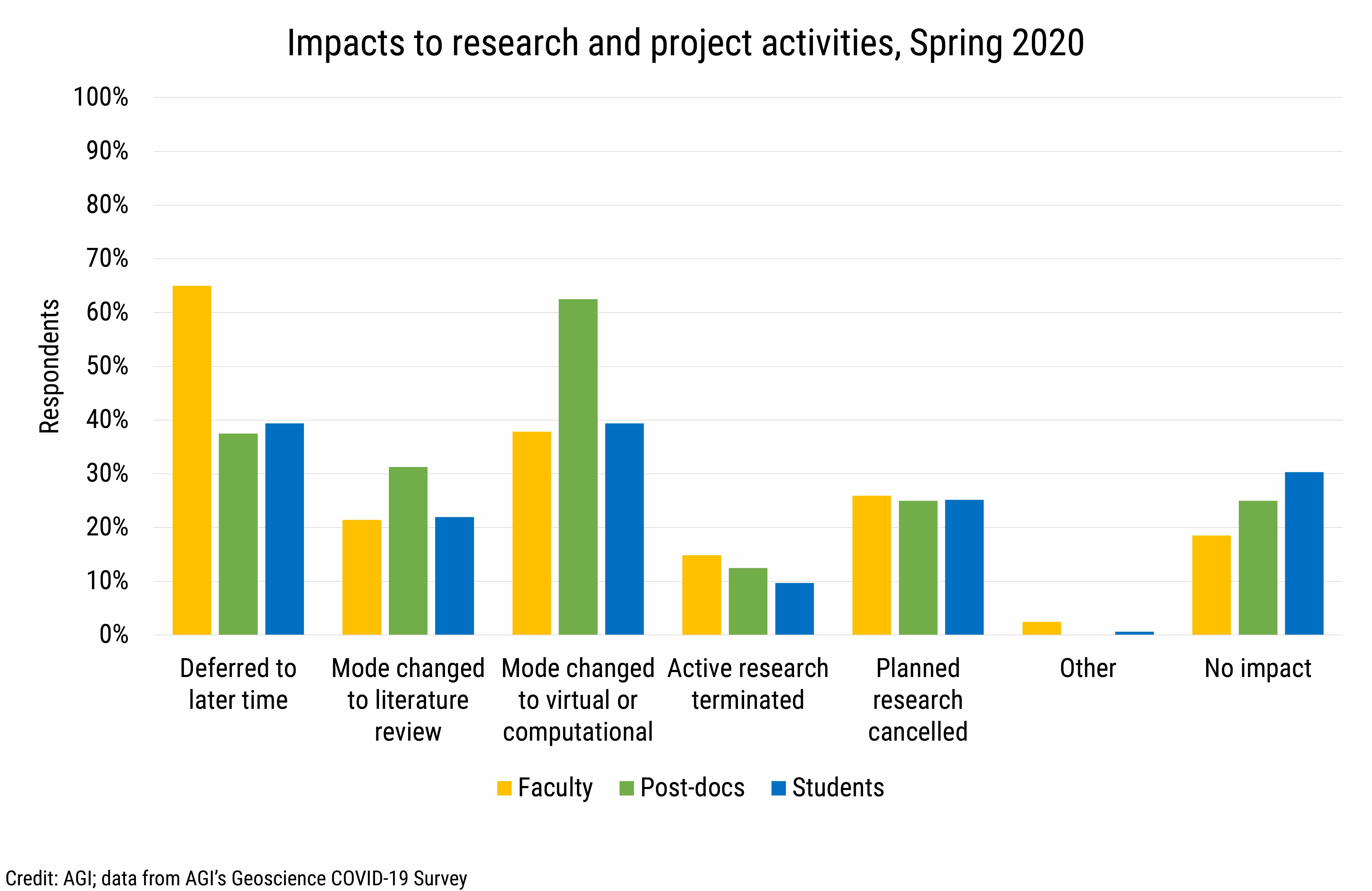
DB2020-021: chart 05:Impacts to projects and research activities, Spring 2020 (Credit: AGI; data from AGI’s Geoscience COVID-19 Survey)
AGI
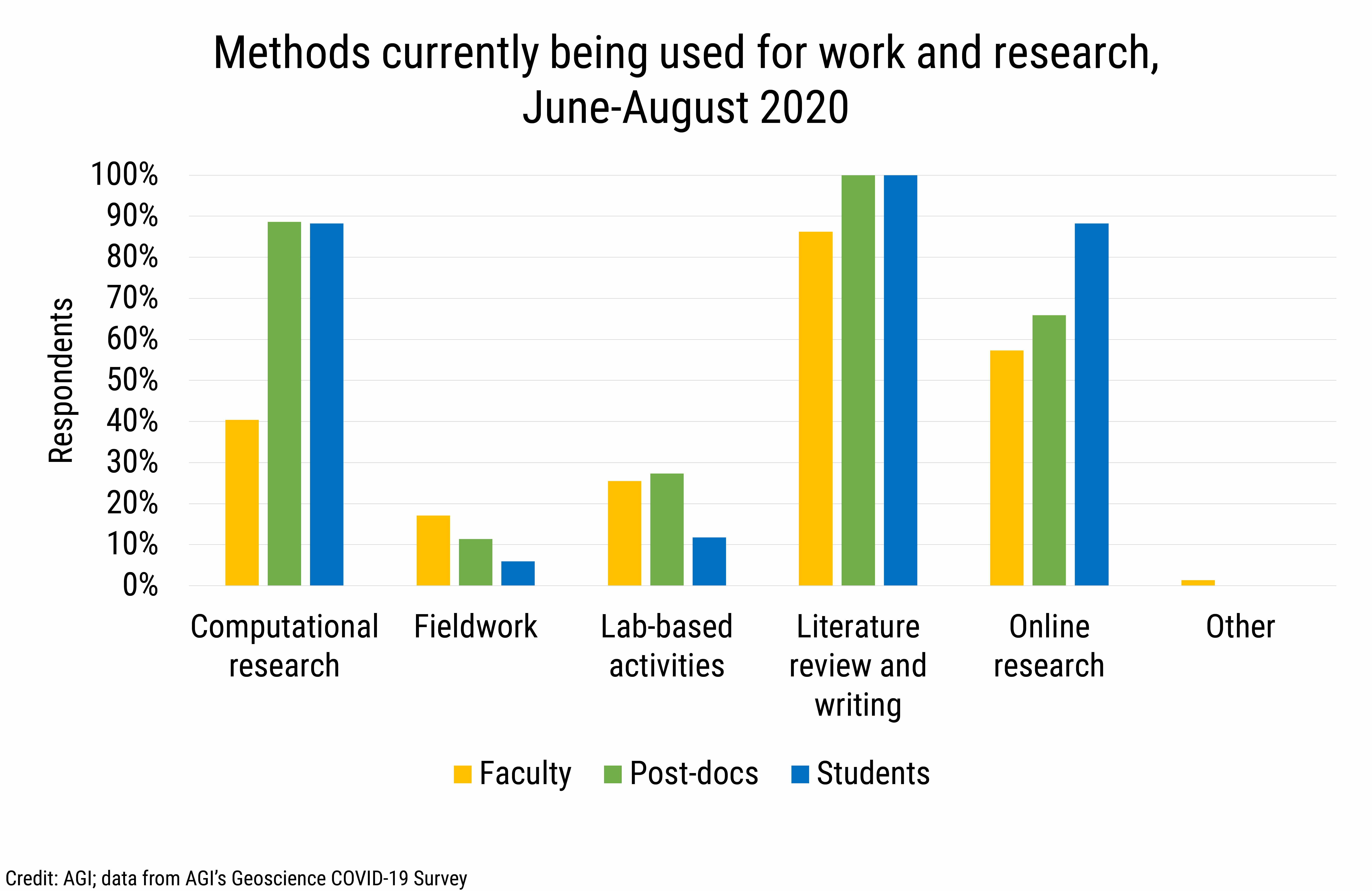
DB2020-021: chart 06: Current research modes used by faculty, postdocs and students (Credit: AGI; data from AGI’s Geoscience COVID-19 Survey)
AGI
Restrictions to work and research activities
In June we asked about COVID-19 related restrictions that impacted work
and research activities and we expanded the questions in July and
August. Survey responses were pooled by institution to understand
changes in restrictions over time at the institutional level. A small
percentage of respondents indicated no COVID-19 related restrictions
impacting their work and research activities. We will continue to track
this trend to see if this is related to those working at home and not
needing facility access or in-person meetings or is a reflection of an
overall lessening of restrictions on research and work activities.
As facilities and campuses began to re-open, increased health and safety
protocols were instituted. By August 2020, 95% of institutions were
requiring the use of face masks inside buildings and social distancing,
whereas just over one-third of institutions were implementing
temperature checks and COVID-19 testing protocols. Only a small
percentage of institutions were reported to utilize health assessments,
either daily or prior to arriving on campus.
With the increase in lab and fieldwork activities over the summer,
restrictions on access (i.e., limited hours, alternate schedules, etc.)
and restrictions on the number of personnel allowed in labs or on field
sites also increased. Throughout the summer, field activities were more
commonly deferred than lab activities, and this may be partly due to
restrictions related to travel and vehicle use.
Online and phone meetings continued to be commonplace with 75% of
faculty and post-doctoral fellows working from home at the end of August
and just over one-fifth working in the office. While most institutions
still did not allow travel in August, there was a slight increase in the
percentage of institutions that did allow limited travel under certain
conditions and often with prior approval. In addition, outside visitors
and guests were not allowed by 45% of institutions by August, and
self-isolation, although not required by many institutions, was more
commonly required upon arrival than before departure.
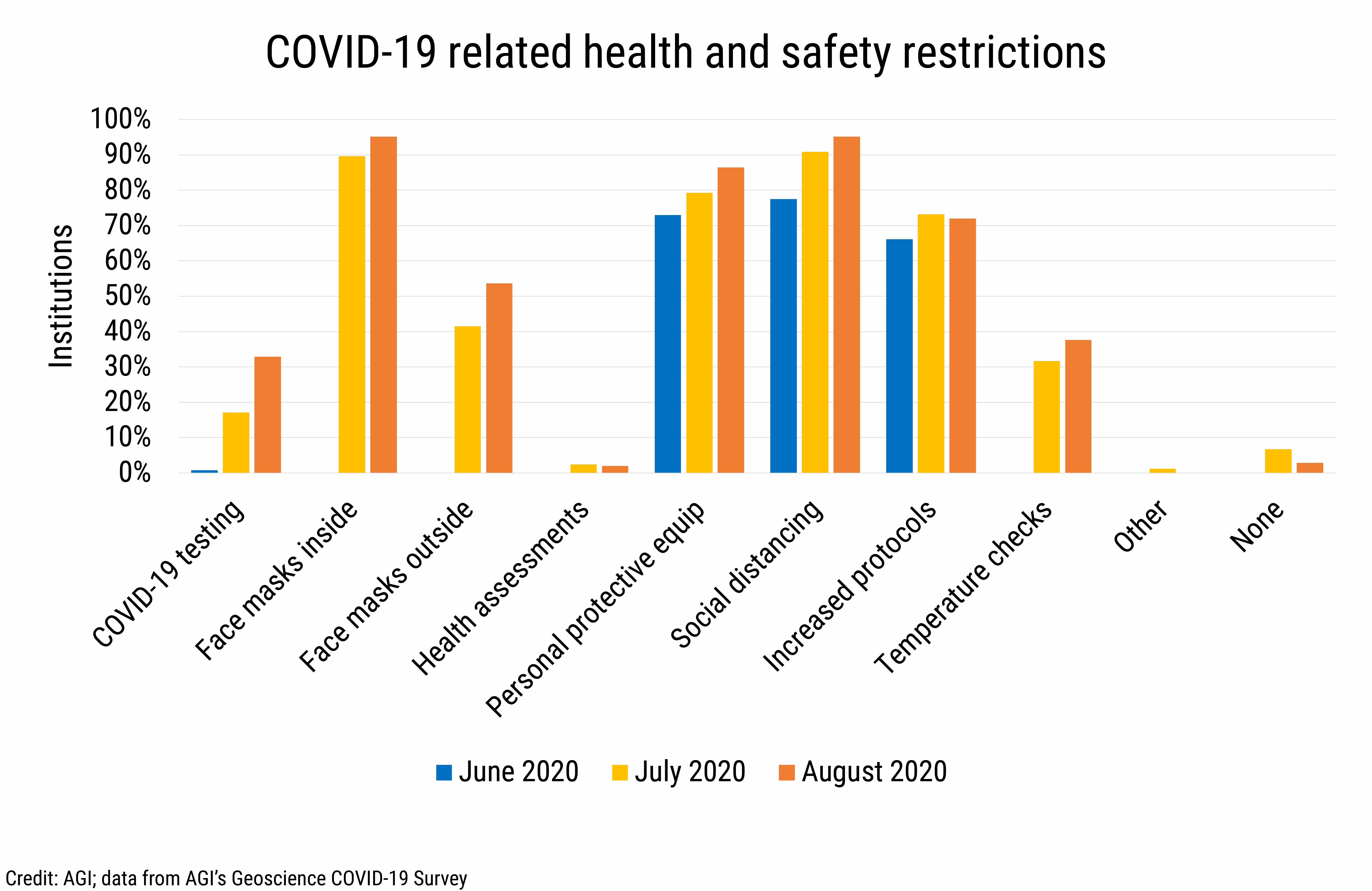
DB2020-021: chart 07: COVID-19 related health and safety restrictions (Credit: AGI; data from AGI’s Geoscience COVID-19 Survey)
AGI
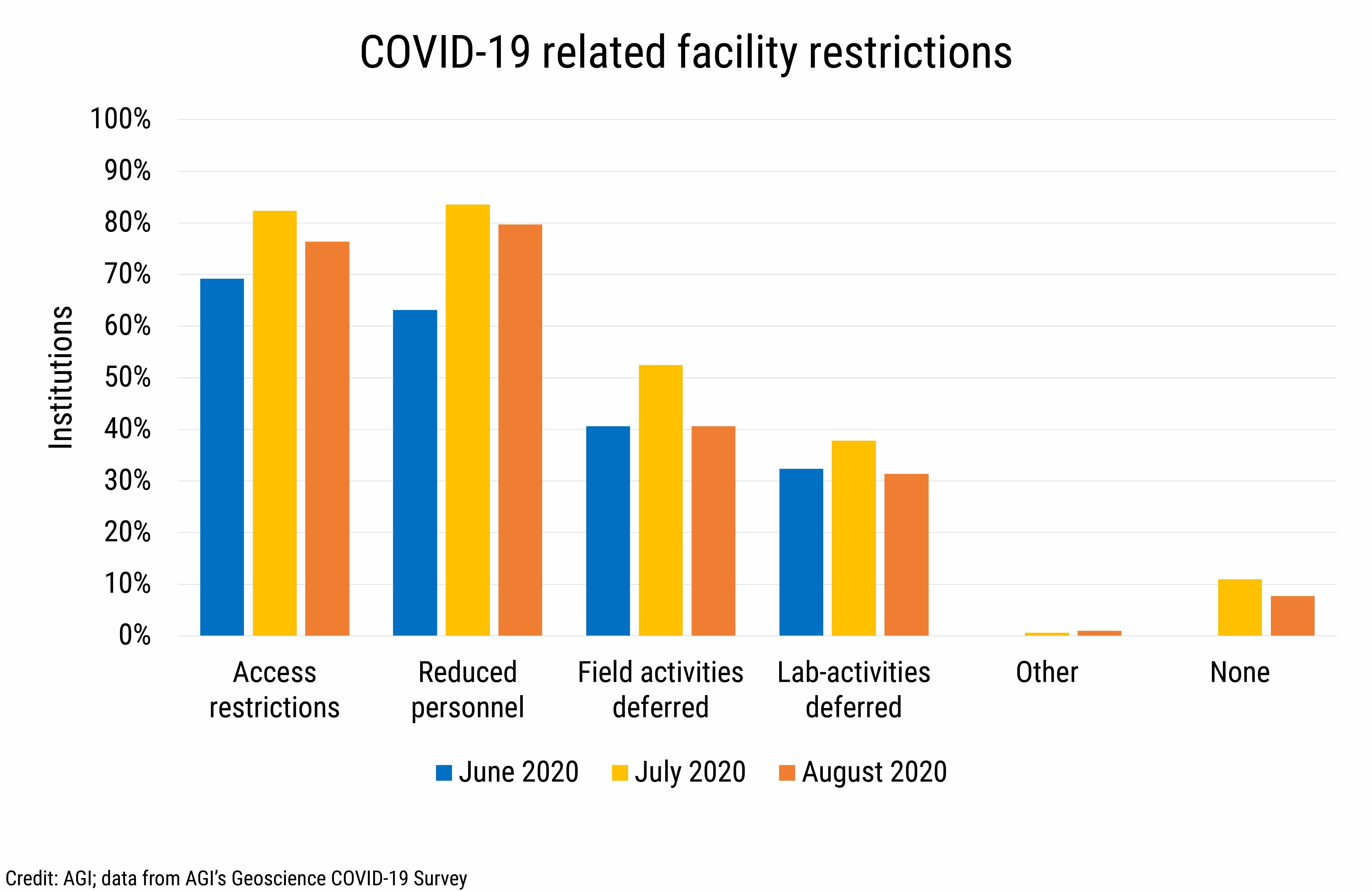
DB2020-021: chart 08: COVID-19 related facility restrictions (Credit: AGI; data from AGI’s Geoscience COVID-19 Survey)
AGI

DB2020-021: chart 09: COVID-19 related meeting and travel restrictions (Credit: AGI; data from AGI’s Geoscience COVID-19 Survey)
AGI
We will continue to provide current snapshots on the impacts of COVID-19
on the geoscience enterprise throughout the year. For more information,
and to participate in the study, please visit:
www.americangeosciences.org/workforce/covid19.
Funding for this project is provided by the National Science Foundation
(Award #2029570). The results and interpretation of the survey are the
views of the American Geosciences Institute and not those of the
National Science Foundation.